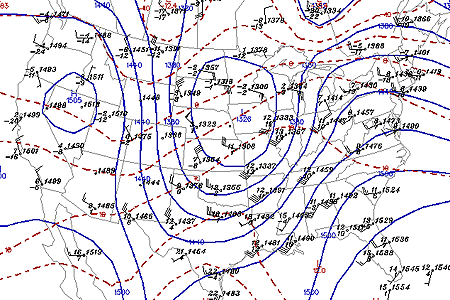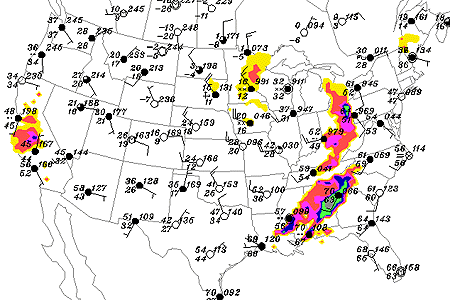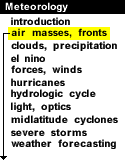
|
Moisture advection is horizontal transport of moisture, which plays a very important role in the development of precipitation. If little moisture is available, it is unlikely that precipitation will form. However, if a cyclone is supplied with an abundance of moisture, there is an increased likelihood that heavy precipitation will develop. Regions of moisture advection are often co-located with regions of warm advection. For the regions of greatest moisture advection, look for areas where the geopotential height contours (blue) and isodrosotherms (dashed red) are nearly perpendicular (map below).

The greatest moisture advection was occurring from Texas into Illinois, as moist air from the Gulf of Mexico was being advected northward by southerly winds ahead of an intensifying low pressure system. This rich moisture supply was enough for showers and thunderstorms to develop as indicated by the radar echoes stretching from Ohio southward to Louisiana (below).

Notice how the precipitation was located in the region where the strongest moisture advection was occurring. Also note that the areas experiencing dry advection (the western states, which were under advection of drier air from the north) had no rainfall.

850 temp advection |
|

voriticity advection |




